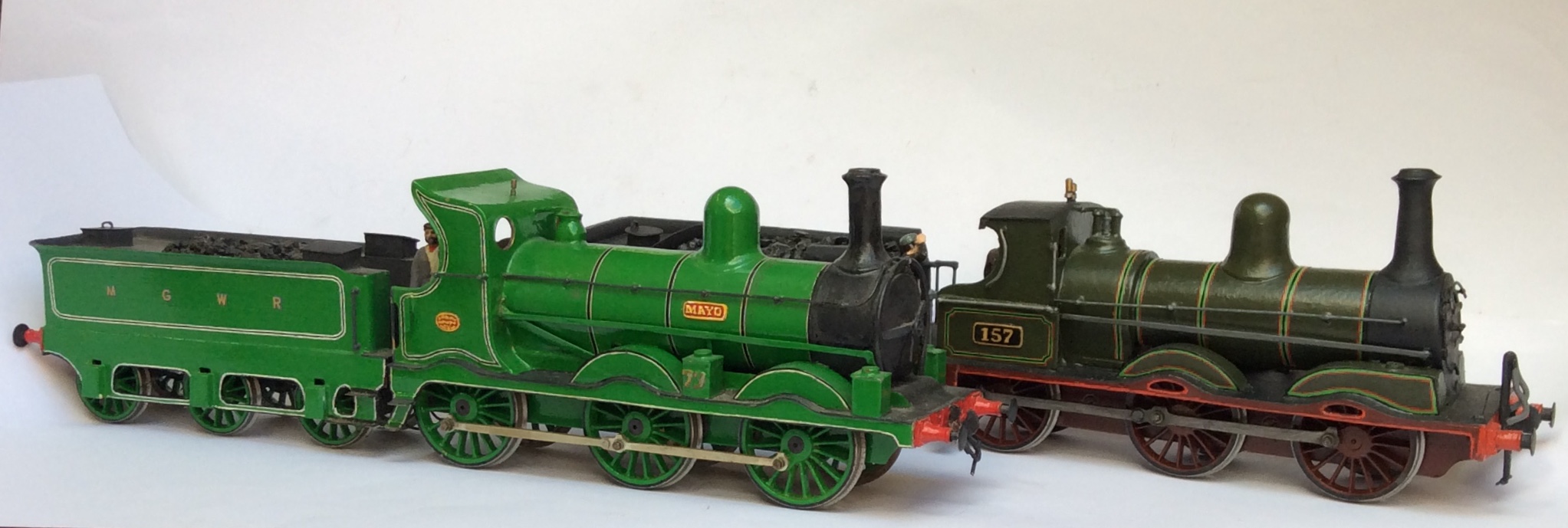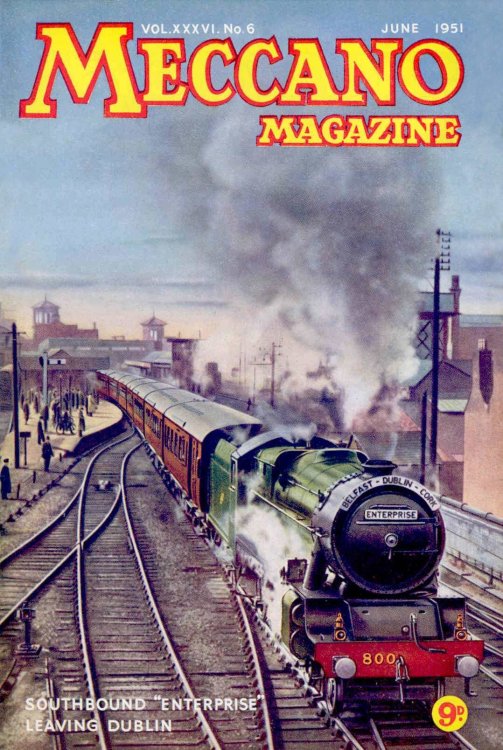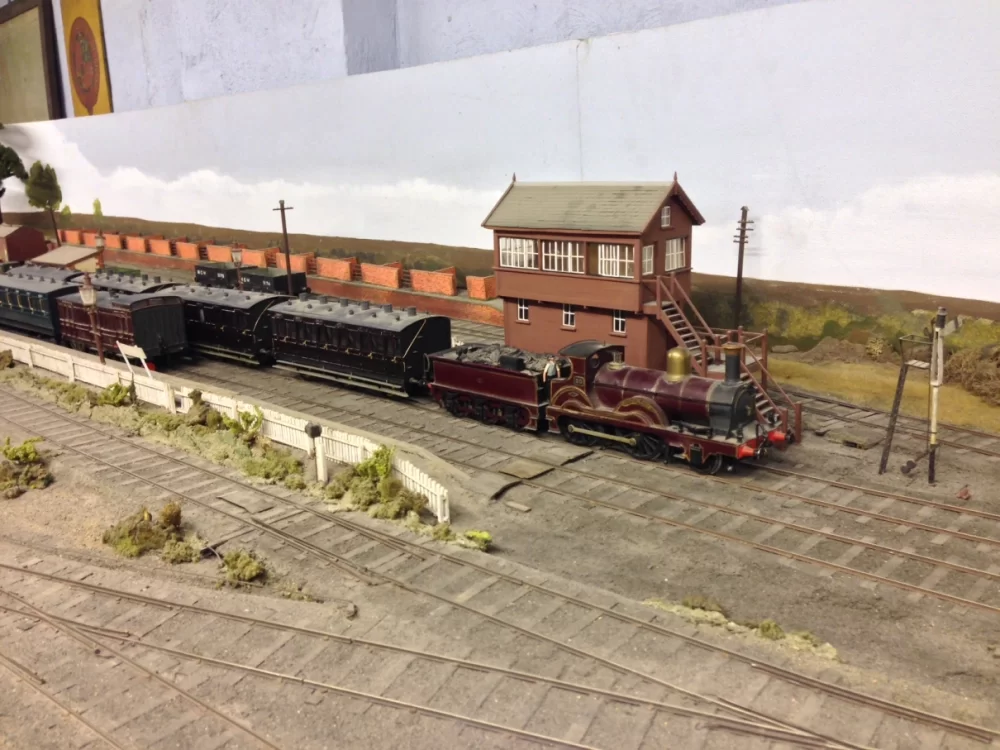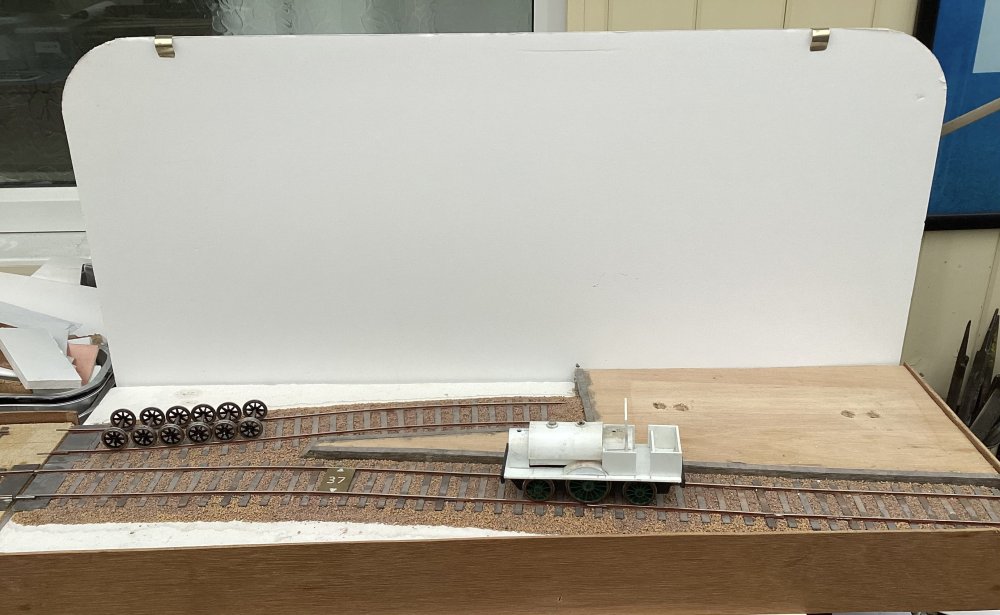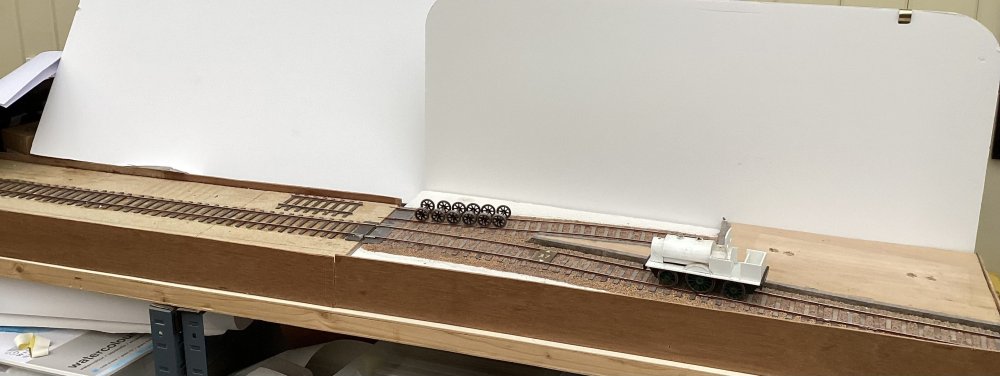-
Posts
332 -
Joined
-
Last visited
-
Days Won
2
Content Type
Profiles
Forums
Events
Gallery
Everything posted by Northroader
-
get Into hospital with dehydration, and they’ll give you that much saline drip you can hear the waves lapping inside you. Hope you’re stable now, and able to hold the fort with the family. best wishes, Bob.
-
One thing I found with the kits for something like a 4-4-0, is the number of small parts there are. You can get a few sheets of etched bits and you’ll find it can run into hundreds of small pieces. You can get an accurate model, but it can sorely try your patience working on things like brake work, which can become very fiddly. The smaller loco you pick the better, for an easy start experience.
-
So, your next move would be having the RH extension able to access the goods shed, and do a bit of shunting? I do really like the look of this. It’s a layout, not a diorama.
-
Shouldn’t the snowman have a sash round him when he’s wearing a hat like that? p.s. the flickering fire effect is very effective.
-
That is a terrific model layout, really lovely.
-
Two widths of plastikard strip, built up side by side alternate on a flat surface in a long length, and slightly tilted. Then when it’s hardened off, rub the front face and the back face with a file, and clean the grooves out. Then cut lengths off as needed.
-
I know him: Hans Neesanbumsadaisy.
-
What you’re saying all makes good sense, and the range of models you’ve been able to make available are really creditable. I was really glad to meet you and you were a grand help in making me slim down. Best wishes with your way forward in the future.
-
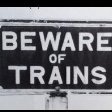
"Voiding the Warranty" - Mol's experiments in 21mm gauge
Northroader replied to Mol_PMB's topic in Irish Models
At one time I used the loft before it got a proper work over. Problem is all the roof supports need air circulating round to avoid rot, so you have an opening round the eaves, and the loft reflects what’s happening outside. It ended up with just limited seasons where it was comfortable to work, in spring and autumn. Summer it was far too hot up there, likewise winter too cold. There was also the way soldered track joints could tear apart over a year due to the expansion. At last I got a proper conversion done, and it was a good room, liveable in. But the other trouble is the inward slope of the roof doesn’t allow much headroom over the layout unless you bring it closer to the middle. I ended up with a lot of microlayouts. -
Thanks for the tip, Leslie, they’re going like hot cakes.
-
Aahhh, ye’re bringing tears to my eyes.
-
-
Have to admit the addition of check rails here and there can help things along no end. S7? Errhh, I once picked up this goods wagon at a bring and buy, and it started falling off all over the layout. Then I spotted the collars inside the wheels. I’ve tried to keep away from such stuff ever since. Nice deep finescale flanges seem to accommodate my layout irregularities. You’re a much better craftsman, though.
-
Lovely smooth runner. I’d be tempted to hook your pickup over the crest of the flange, so it rides with any wheel movement, and won’t get any crud off the tread.
-

Rails through Northern Parts; the potential
Northroader replied to jhb171achill's topic in General Chat
Thank you, David, that gives a very good idea, and as you say, not a place you’d think to look. Now, they had a Fairbairn 2-2-2T that lasted until 1898, last single driver on the BNCR. Just like the MGWR ones, excepting it was a well tank rather than a saddle, and I do happen to have a pair of 5’ drivers which I’ve taken the crank pin boss off, so…. -

Rails through Northern Parts; the potential
Northroader replied to jhb171achill's topic in General Chat
I’m hanging on your every word for going North, JB, sounds good to me. I like doing the era 1880 -1900, you could get a much shorter train for a start. Now, question is, is there anywhere you get an idea of how BNCR locos were lined out? The dark/invisible green isn’t a worry, but William Scott’s book isn’t too clear about lining. Looking through your pictures of Cyril Fry’s locos at Malahide, and I haven’t found any BNCR there? -
No post on here for too long, I’m afraid. There has been a bit of progress, for the track is now laid and ballasted, what bit of it there is. I’m using copper clad fibreglass strip and nickel silver rails from Marcway of Sheffield, laid to 37mm gauge. The main board is to the right, running line in front of the platform and a bit of a siding behind, then a fiddle yard to the left, one siding laid and at least one more needing track materials. There’s some Slaters wagon wheel sets waiting for bodies, The wheels pushed out over the axle a bit to the wider gauge and a drop of Superglue ploshed on in the hope they’ll stay there. The other item of interest is the loco, which is a runner. It’s intended to be a Fairbairn single driver tank, and as it’s a wider gauge I did it all in .060”Plastikard, chassis and body, rather than the more usual strip brass and machined brass spacers I use for 32mm. gauge.
- 149 replies
-
- 10
-

-
I was looking at a picture the other day, and first I have to admit it’s the most shocking place to draw a reference from, as it the Armagh calamity, which must have really hit many people in that community, and still has the power to shock today. It’s just there are very little sources left to us from that time. The carriage on the left would appear to be a standard GNRI third class six compartment six wheeler. I would venture that the one on the right is also third class, with the close spacing of the compartments, and the skimping of the lamp spacing. It has five compartments rather than six, though. As much as can be made out, the body style of panelling and so on matches the other coach. Would it be an earlier build, or one of the absorbed lines? The three axles underneath look very close, was it a four wheeler which gained an extra wheelset similar to the saloon refurbish of the previous post?
-
Interesting that you changed the chimney, the Alphagraphix one looks a bit slender? Lovely little engine now it’s done.
-
Just looking at the proportions, I’d reckon a GWR road van would come close. They’re a very rare job, a standard van with goods van doors added on. There’s a picture of a laser cut model on Didcot Design Services, although I can’t call it up on the site. Page down on the GWR modelling site for details: http://www.gwr.org.uk/nobrakes.html
-
Nobody’s asked yet if you can make Dunluce Castle out of a 2P.
-

ACE Trains London - O Gauge
Northroader replied to DJ Dangerous's topic in British Outline Modelling
They tend to do short runs of popular prototypes, and outsource the production to ETS Trains, a Czech outfit. They do coarse scale 0 gauge, mainly retro tinplate with an enamel finish. -
That layout is Edgware Road, not Ealing Broadway.
.png.c363cdf5c3fb7955cd92a55eb6dbbae0.png)
